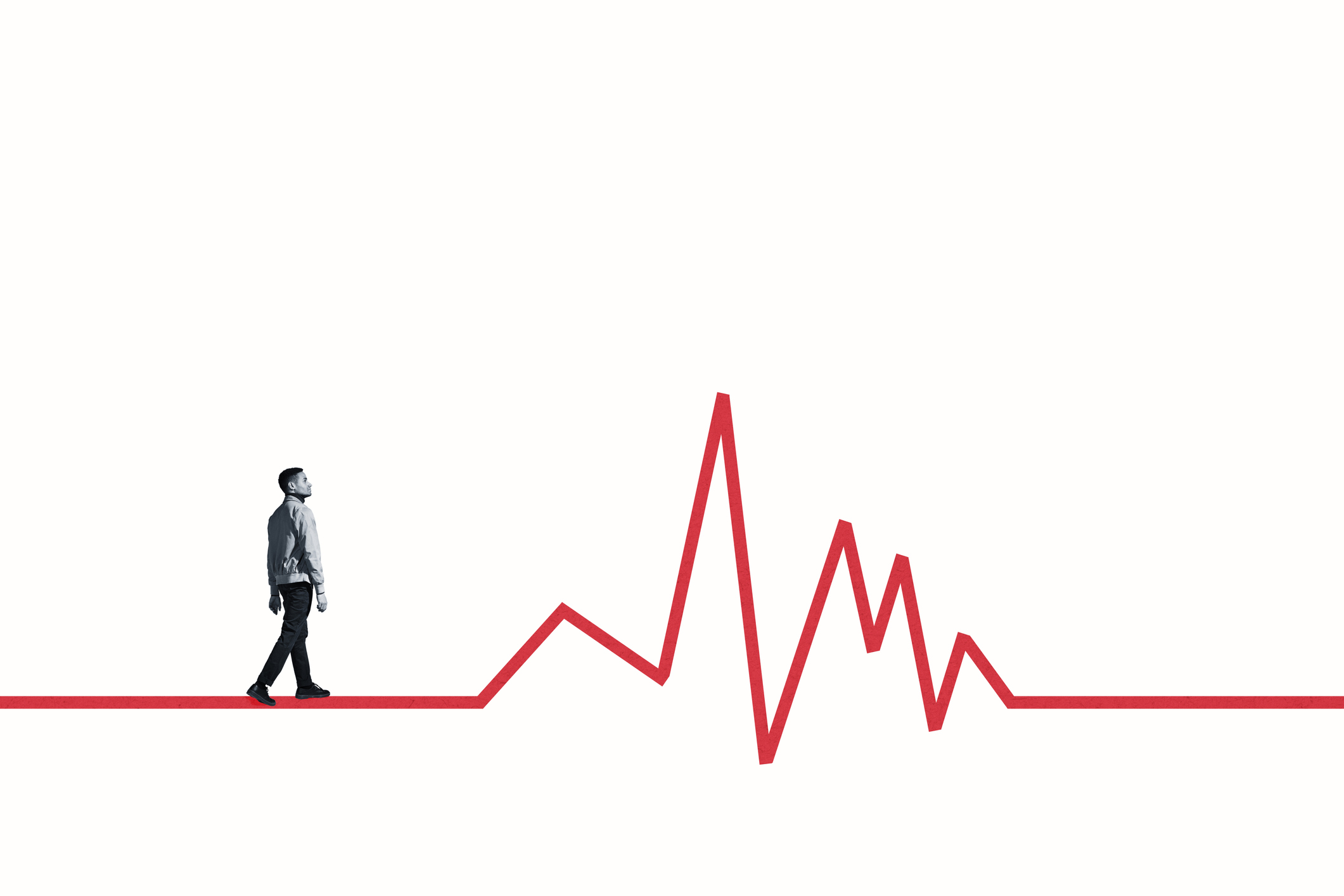Just like the rhythm of your favorite song, our hearts carry a beat that keeps blood moving through your body at a healthy rate. The heart’s electrical system sends signals that keep your heartbeat in line.
When interrupted, these signals can cause the upper chambers of your heart to tremble or pace rapidly. This abnormal heart rhythm known as atrial fibrillation is a form of arrhythmia that makes the heart muscle look as if it’s wiggling instead of squeezing or contracting. As we continue to treat hearts across the region, the experts at the Carle Heart and Vascular Institute are educating our community on how to stay healthy.
There are multiple causes of atrial fibrillation, including:

Anuj Garg, MD, electrophysiology, Carle Heart and Vascular Institute breaks down what happens during atrial fibrillation.
“Our hearts consist of four chambers that must squeeze a certain way to move blood throughout our bodies and the heart’s electrical system uses specialized cells that tell the heart when to beat,” Dr. Garg said. “If these cells malfunction and send too many signals, the upper chambers can beat quickly and unevenly, restricting how much blood pumps into the lower chambers. Basically, your heart is working harder to get blood to your body.”
While some may never feel their atrial fibrillation, others may experience noticeable symptoms. These can include the feeling of irregular or fast heartbeats known as palpitations. Some may also experience difficulty breathing, chest pain fatigue or fainting.
In order to determine if a patient has atrial fibrillation, your health care provider may look for unusual heart patterns on an electrocardiogram (ECG), which can display your hearts electrical activity. Your provider may also check the movements of your heart chambers using an ultrasound to capture moving images or videos of your hearts movements.
“The key to staying healthy is listening to your body and detecting atrial fibrillation early,” Dr. Garg said. “It’s so important to talk to your primary care provider about any changes you notice to your heartbeat or any other symptoms you are experiencing. There are many treatment options available to those diagnosed with an arrhythmia”
Regulating heart rhythm and the rate of your heartbeat with medicine is important. These medications, known as antiarrhythmics, slow down the heart rate and make it regular again. Sometimes, but not always, the atrial fibrillation stops on its own.
Sometimes a procedure known as cardioversion can shock an abnormal rhythm back on beat. For this, a Carle heart specialist will give your heart a brief, safe shock to shortly stop electrical activity to allow the normal heart rhythm to take over.
It’s important to be honest with your primary care provider about the symptoms you are experiencing. With early intervention, providers can help you treat and manage atrial fibrillation to keep you safe and healthy.
Visit carle.org/heart for more information on how Carle is keeping hearts healthy.
When interrupted, these signals can cause the upper chambers of your heart to tremble or pace rapidly. This abnormal heart rhythm known as atrial fibrillation is a form of arrhythmia that makes the heart muscle look as if it’s wiggling instead of squeezing or contracting. As we continue to treat hearts across the region, the experts at the Carle Heart and Vascular Institute are educating our community on how to stay healthy.
There are multiple causes of atrial fibrillation, including:
- Aging
- High blood pressure
- Congestive heart failure
- Lung disease
- Thyroid dysfunction

Anuj Garg, MD, electrophysiology, Carle Heart and Vascular Institute breaks down what happens during atrial fibrillation.
“Our hearts consist of four chambers that must squeeze a certain way to move blood throughout our bodies and the heart’s electrical system uses specialized cells that tell the heart when to beat,” Dr. Garg said. “If these cells malfunction and send too many signals, the upper chambers can beat quickly and unevenly, restricting how much blood pumps into the lower chambers. Basically, your heart is working harder to get blood to your body.”
While some may never feel their atrial fibrillation, others may experience noticeable symptoms. These can include the feeling of irregular or fast heartbeats known as palpitations. Some may also experience difficulty breathing, chest pain fatigue or fainting.
In order to determine if a patient has atrial fibrillation, your health care provider may look for unusual heart patterns on an electrocardiogram (ECG), which can display your hearts electrical activity. Your provider may also check the movements of your heart chambers using an ultrasound to capture moving images or videos of your hearts movements.
“The key to staying healthy is listening to your body and detecting atrial fibrillation early,” Dr. Garg said. “It’s so important to talk to your primary care provider about any changes you notice to your heartbeat or any other symptoms you are experiencing. There are many treatment options available to those diagnosed with an arrhythmia”
Regulating heart rhythm and the rate of your heartbeat with medicine is important. These medications, known as antiarrhythmics, slow down the heart rate and make it regular again. Sometimes, but not always, the atrial fibrillation stops on its own.
Sometimes a procedure known as cardioversion can shock an abnormal rhythm back on beat. For this, a Carle heart specialist will give your heart a brief, safe shock to shortly stop electrical activity to allow the normal heart rhythm to take over.
It’s important to be honest with your primary care provider about the symptoms you are experiencing. With early intervention, providers can help you treat and manage atrial fibrillation to keep you safe and healthy.
Visit carle.org/heart for more information on how Carle is keeping hearts healthy.
Categories: Staying Healthy
Tags: atrial fibrillation, cardiology, heart
